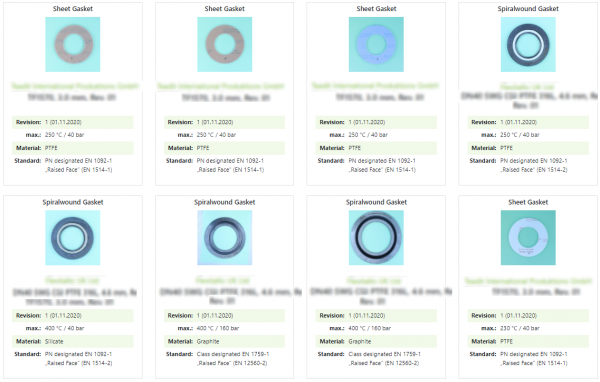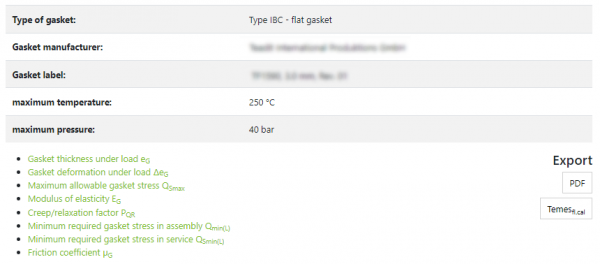In December 2020, ESA has launched a database on the website ESAdata.org on which validated gasket characteristics of the ESA members gasket materials are published. The ESA is operating the database ESAdata.org as a service for its members and for general industry. To ensure consistency and accuracy, the data is verified from each manufacturer and independently validated and approved for publication by an ESA Task Force.

The database has grown continuously over the past two years, and the reputation of this source for reliable parameters has increased steadily. ESA is proud to announce today the next step in the development of the gasket database ESAdata.org. The design has been completely revised, the selection and filter options have been significantly expanded for the user. In addition to previously possible selection criteria such as gasket manufacturer and gasket type, the gasket material, the tested gasket geometry, the test temperature, the test pressure, and the achievable tightness class can now be preselected.
All gaskets that meet these criteria are listed via this preselection, either in a list view or in a tile view. This overview then shows the most important information about the relevant gaskets and their characteristic values.

More detailed information, including all characteristics in tables and diagrams, can be obtained by selecting a gasket.

All properties of the gaskets are now listed in this view, for all temperature and internal pressure levels the gasket parameters QSmax, EG, PQR, Qmin(L) and QSmin(L) which are defined in EN 13555 are shown. In addition, the gasket thickness and deformation in dependence on the applied gasket stress which are required for Finite Element Analysis are shown, and friction factors are also assigned to the gaskets according to the results of a former ESA research project. From this view, both the gasket datasheets in pdf format and the gasket parameters in xml format can be downloaded. With a suitable interface, the xml file can be read into software tools for calculation according to EN 1591-1.
The ESA has also decided to open the database for non-members. Manufacturers who fulfil the requirements can submit their data for publication on the ESAdata.org database. Please contact Mark Neal for further information.
